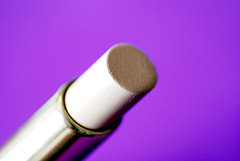
 Concealers are wonderful, no doubt, but all of them don’t work well for all skin types. If you have mature skin, for instance, you probably want to steer clear of solids, and dry skin types will be disappointed in powders. If you’re going through cancer treatments, you’re probably noticing changes in your skin-mainly, that it’s dryer. In that case, you may need to shop for a new concealer. (A safe, toxin-free one, that is!)
Concealers are wonderful, no doubt, but all of them don’t work well for all skin types. If you have mature skin, for instance, you probably want to steer clear of solids, and dry skin types will be disappointed in powders. If you’re going through cancer treatments, you’re probably noticing changes in your skin-mainly, that it’s dryer. In that case, you may need to shop for a new concealer. (A safe, toxin-free one, that is!)
No matter your skin type or shade, concealer can do a lot to create a flawless appearance. Here are some tips on the various kinds you have to choose from.
Solid: These usually come in wand or stick forms. They provide the best coverage and are particularly effective on scars, bruises and acne spots. They are thick and help fill up indentations, so if you want to hide pockmarks or old chicken-pox scars, these are the way to go. If you have mature skin, avoid these as they can accentuate fine lines and wrinkles.
Stick: A solid concealer in a stick form, sticks are a great addition to your purse for quick-fixes on the go. They cover completely, so if you have a scar, bruise, or dark area that’s particularly stubborn, a stick is a good way to hide it. These can look cakey, however, so apply sparingly.
Liquids: These are best for women with dry, aging skin-and those who are going through chemotherapy. They also work well for all-around coverage. They’re often considered one of the best choices for under-eye circles, since they’re easy to blend on tender skin and you don’t have to rub too much. Liquids provide a sheer coverage and a light finish, and can help make red veins on the cheeks and nose less visible. However, they can fade faster, so be sure to set with powder.
Cream: These concealers usually come in a tube or pot-like container. Some come in color combinations that can be especially effective for covering blemishes or scars. Coverage is not as heavy as stick concealers, but they do cover well (better than liquids) and are great for all skin types. Apply sparingly, as too much can look cakey. At the right level, cream concealers give off a dewy look.
Powder: With the popularity of new mineral makeup, powder concealers are now available. These are best for covering larger areas, and grant a lightweight feel. Users also rave about the natural look even after applying powder foundation. Powder is not the best choice for dry skin, however, as it can settle into fine lines. Powder concealer also doesn’t cover blemishes very well-choose another option for those.
What shade? There are a couple rules for choosing a shade. First, consider your skin tone, and go just a half-shade lighter. For pale skin, use a light beige with yellow undertones. Cool skin tones do well with peach or apricot colors. Warm skin appears more flawless in yellow tones. Olive skin should go for medium beige with pink undertones, and darker skin should choose a medium to medium-dark shade with peach undertones. Test along your jawline. (Always buy products that you can return if they’re not right, and make sure to be very careful around cosmetic counter testing units. Use disposable applicators to avoid infection.) Another test: if your concealer is too light or too pink, it will emphasize the dark area rather than concealing it. Or, try a bit of concealer over your foundation. If you can’t see it, you’ve got the right shade.
You may want also to consider what you’re trying to correct. If you have ruddy tones or broken capillaries, a blue or green concealer will cover better than a yellow. Yellow is best for covering dark areas or undereye circles, and for overall concealing. If you have pale- or yellow-tone skin, you may want to try shades of lavender and rose for a livelier complexion.
For a more natural-looking concealer, try a cream-to-powder foundation under your regular foundation.
How do you choose the best concealer for you? Let us know.
Photo courtesy of incurable_hippie via Flickr.com.

